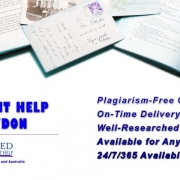Introduction
Project management is referred to as the methodological approach that is used to achieve an agreed-upon end result within a stipulated period of time with well-defined resources. In this context, the study below has prepared a project management assessment that will demonstrate the audience skills in the initial phase of project management (Allahar 2019). Considering the case study of Melbourne Glaziers, this assessment will extract relevant information and execute it to design a defined project. Information will be used to prepare a project charter, assumption log, stakeholder register, change request form, scope management plan, requirements documents and preliminary financial analysis.
Discussion
Project Charter
This is a document that will illustrate approval of the project and person who is responsible for this.
| Title | Melbourne Glass Plant |
|---|---|
| Approval Date | 20/8/2021 |
| Project Manager | Robert Johnston |
| Manager Details | +919547821525, robert_johnston@gmail.com |
| Projected Finish Date | 25/3/2022 |
Table 1: Project Charter
(Source: Created by author)
Background of the project
In the project scenario of Melbourne Glass Plant, Melbourne Glaziers has located this project in an Outer Melbourne suburb. Through this project glass products can be supplied across Melbourne. As per the views of Stepien et al. (2019), glass can be ordered in bulk as one of the parts of a construction project that usually consist of bus shelter, glass and huge sections of internal feature walls.
Vision of the project
The main vision of Robert is to become a core customer of Melbourne Glass Plant to get beneficial discounts in order to pass it on to the customers and get assistance to compete within the competitive environment.
Estimated budget
The project is expected to be completed within 6 months from the starting time and the estimated net budget will be $200,000. Melbourne Glaziers will receive payment by direct debit after submitting an invoice to the company for raw materials.
Success criteria
The success criteria related to this project is to get large scale projects along with RFQ submissions that as it is given to the company that later rewards the project after completion. Moreover, customer participation with adequate knowledge about the glass materials is imperative in the initial stage to prepare the project (Zheng et al. 2018).
Project scope
In-scope
| Priority | Story | Story Name | Description |
|---|---|---|---|
| High | Requirements of glass | Glass plant | All the requirements should be planned in the initial stage of the project. |
| Medium | Specification of glass materials | Glass materials | Comprehensively identifying the specifications and putting it together in a quote for materials. |
| Medium | Plan and construct | Construction of project | Delivering the product and installation |
Table 2: In-Scope of the Project
(Source: Created by author)
Out-of-scope
- Identifying and analyzing the business strategies
- Feedbacks needs to gathered from the customers
- Business position of Melbourne Glaziers needs to be observed
Role and responsibilities
Project manager: Monitoring each stage of the project
Finance manager: He will extract information associated with the repairs and installations along with bills paid and invoices paid to the suppliers.
Marketing manager: He will mail out the prospective clients within the Melbourne area.
Data analyst: With reference to this project, the database will be provided by the data analysts associated with this project. The data analysts will be storing the data and information of the customers. They are also in charge to secure the stored information and avoid disclosure.
Assumption log
An assumption log is referred to as the document that is used by the project manager and the team members to capture, document and trace the assumptions all throughout the stages of the lifecycle of the project. Table 3 has demonstrated a list of assumptions (Lefebvre and Giorgi 2021). Each assumption has a party who is responsible for it and action to be taken to later validate the assumption.
| Assumption | Responsible party | Action |
|---|---|---|
| Availability of the resources | Project manager | Regularly checking the quantity of resources used and available for other activities. |
| Develop financial data and information related to the repairing and installation purpose. | Finance manager | Use Microsoft Excel and MYOB for accounting activities. |
| Various technologies can be assumed to create a structure of glass infrastructure that is necessary to accomplish the vision of the project. | IT manager | Be updated with the latest technologies. |
| Complete the project under the stipulated period of time | Team leader | Ensure every task is meeting as per the timings allotted. |
| To complete the project under the estimated budget. | Finance manager | Direct amount of cost utilized in each task |
Table 3: Assumption log
(Source: Created by the author)
Stakeholder Register
Stakeholder register is illustrated in table 4 that has shown a list of stakeholders and their responsibilities that will directly or indirectly impact or influence the overall success of the project.
| Stakeholders | Responsibilities in the project |
|---|---|
| Project Director | Direct the stages of the project and also check the progress on a regular basis. |
| Project Manager | Manage the whole project activities and roles of every personnel related to the project. |
| Quality assurance manager | Supervise and scrutinize individual tasks of the project to ensure superior quality of each task and deliver a successful project |
| Application Architect | Design and prepare a layout of the glass plant and attach instructions to ensure there is no bug in the project operation and in responsiveness as well. |
Table 4: Stakeholder Register
(Source: Created by the author)
Change request form
Change request form is considered as the primary tool that is used by the project manager and project director to request, approve and document changes required in the project (Mohammad and Heravi 2019). This form is used when the project manager observes that the project is not delivering optimum results in each stage of the project lifecycle.
| Project name: Melbourne Glass Plant | |
|---|---|
| Requested by: Robert Johnston | Date: 12/10/2021 |
| Request name: Daniel tailor | Request Number: 124/B12 |
| Change description: Request for repair and replace the project schedule | |
| Change reason: The activities in the schedule is not completing within stipulated period of time | |
Impact of change:
|
|
| Proposed action: Re-create the project schedule as per the nature of the tasks and activity | |
| Associated cost: $4500 | |
| Approved by: | Date: 20/10/2021 |
Table 5: Change request form
(Source: Created by the author)
Scope Management Plan
| Role | Responsibilities |
|---|---|
| Owner | Prepare a document and enlist the project scope that is expected after completing the project. |
| Project manager | Find out and execute the scope of the project and secure sign off as well as oversee the change request. |
| Finance manager | Develop financial reports related to the project budget, account payable, account receivables and expenses. |
| Marketing manager | Build and disseminate awareness by creating and evaluating on the marketing strategies to accomplish needs and requirements of the customers. |
| Change controller | Look after and manage the change that has been requested and ensure to meet those changes.
Coordinate the evaluation of change requests. Conduct change managing meetings. Interaction and documentation of change request. |
| Project sponsor | Formally accepting the project scope statement and allowing the key personnel to carry out their roles for the same. |
| Project team leader | Recommending the baseline of the project scope and, at the same time provide specifications to the team members in order to evaluate to neet change requests. |
| Project team member | Provide contribution to scope the tasks and align it with the vision statements of the project.
Provide contribution in the change request that will later impact the project. Liaise with specified stakeholders. |
Table 6: Scope Management Plan
(Source: Created by the author)
Requirements Document
| Requirement description | Priority |
|---|---|
| A skilled team identify and scrutinize the business requirements | High |
| Conduct an initial feasibility study with a purpose to computerise the parts of operations. | Low |
| To create a timeline document to get approval from the company and according to that start the ordering process. | Medium |
| Prepare an installation order after designing the glass for cut to required size | Medium |
| Book a glazier truck for delivering and installation purposes. | Low |
Table 7: Requirements Document
(Source: Created by the author)
Preliminary Financial Analysis
| DISCOUNT RATE: 9% | |||||
|---|---|---|---|---|---|
| Assume the project is completed in 6 months | |||||
| Within 6 months | 1 year | 2 years | 3 years | Total | |
| Cost | $200,000 | $30,000 | $30,000 | $30,000 | |
| Discount factor | 1.00 | 0.92 | 0.84 | 77 | |
| Discount costs | $200,000 | 27,522 | 25,250 | 23,165 | 275,937 |
| Benefits | 0.00 | $100,000 | $100,000 | $100,000 | |
| Discount factors | 1.00 | 0.92 | 0.84 | 0.77 | |
| Discount benefits | 0 | 91743 | 84167 | 77218 | 253,128 |
| Discounted benefits- costs | 200,000 | 64,221 | 58,917 | 54,053 | -22,809.00 (NPV) |
| Cumulative benefits- costs | |||||
| Rate of interest | – 8.27% | ||||
Table 8: Preliminary Financial Analysis
(Source: Created by the author)
Conclusion
The study above has provided essential plans and assessment that is needed to successfully complete the project. Melbourne Glaziers has involved a glass preparation area that will be collating all the job sheets and the work orders in order to monitor the stock levels and according to that re-order the stock when level will decline below the threshold levels. It is complicated to regularly keep a track of work orders and all the job stress to re-order. As a result, sometimes certain paperworks are also necessary for large scale projects like the Melbourne Glass plant. This needs to be regularly tracked to avoid delays and loss of the awarded contracts.
Reference
Lefebvre, F. & Giorgi, R. (2021), “A strategy for optimal fitting of multiplicative and additive hazards regression models”, BMC Medical Research Methodology, vol. 21, pp. 1-17. Available at: https://www.proquest.com/docview/2528911080/abstract/779DF3413C94484CPQ/1?accountid=30552 [Accessed on: 22.08.2021]
Mohammad, H.C. & Heravi, G. (2019), “Evaluating the preventability of conflicts arising from change occurrence in construction projects”, Engineering, Construction and Architectural Management, vol. 26, no. 8, pp. 1777-1800.Available at: https://www.proquest.com/docview/2282427348/abstract/A0BF999BD7F04941PQ/2?accountid=30552 [Accessed on: 21.08.2021]
Zheng, M., Asmussen, A. & Jørgensen, B.N. (2018), “Industrial Consumers’ Smart Grid Adoption: Influential Factors and Participation Phases”, Energies, vol. 11, no. 1, pp. 182. Available at: https://www.proquest.com/docview/2002777422/abstract/4FB07411914C4519PQ/3?accountid=30552 [Accessed on: 20.08.2021]











